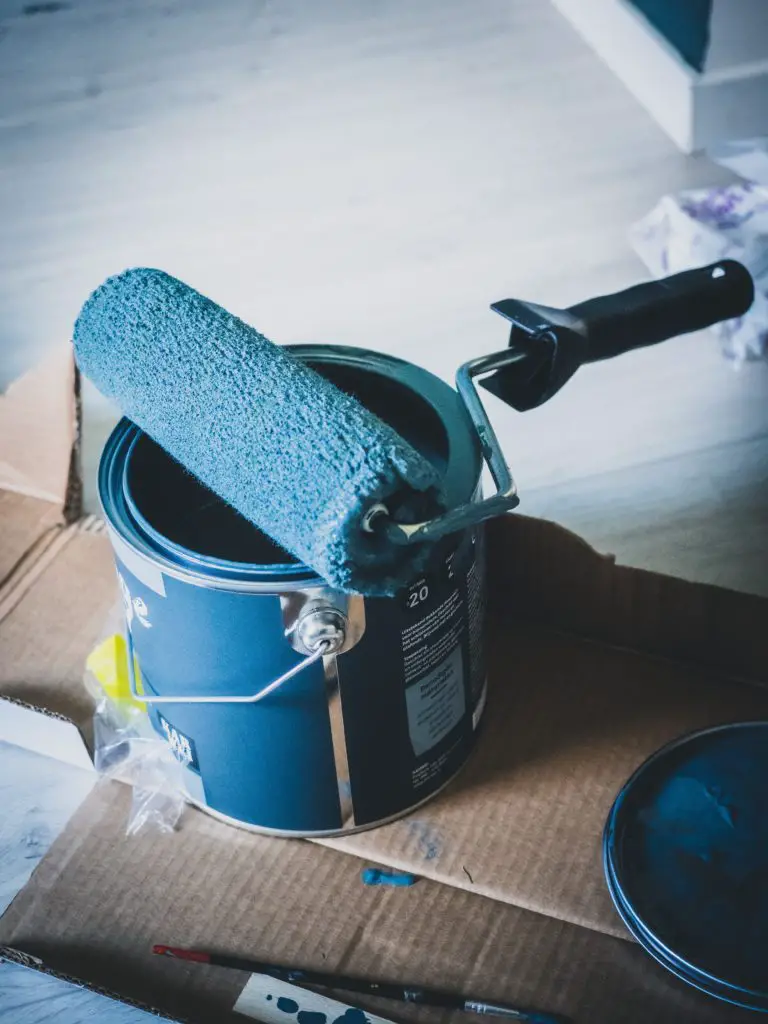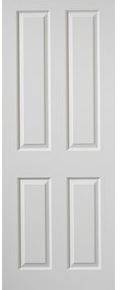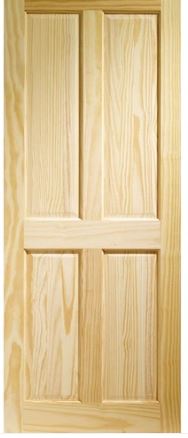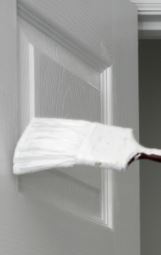Do you ever question if you need to paint your primed door? Some pre-primed doors look like they do not need painting. When I was buying doors for my home, I was seriously considering not painting them. There were no brush marks, they looked okay – but then I did a little research, and here’s why painting a primed door is recommended.
Can you leave a primed door unpainted?
It is recommended to paint your primed door since the function of a primer is to bond and cover permeable surfaces. It’s not made to withstand elements like paint. Paint offers additional protection against the elements, temperature changes, and everyday use.
Painting the doors in my home was a daunting task for me. Getting paint on the hinges and door handles, not to mention the edges and the carpet was a concern. Nevertheless, it had to be done. Here’s some of the questions I asked myself whilst going through the process.
What Paint To Use On Primed Doors?

Choosing the color of your paint is one thing, but so is the type of paint and the finish that you’re looking for. Before you walk into a paint shop, it’s worth knowing the different types of paint and finish out there.
Paint options for wooden doors:
- Gloss – The most durable paint. It has a high sheen finish, which gives it that polished shiny look. The best protection against wear and tear.
- Satinwood (Semi-Gloss) – Keeps its color better than gloss paints but is not as durable. Good for low traffic rooms.
- Egg Shell – Gives a more matt finish to your doors. Not as durable as Gloss or Satinwood
Gloss paints tend to be used on kitchen and bathroom doors given that they tend to be the high traffic areas in a home. Satinwood (semi-gloss) can be used on doors but are best for window sills and skirting boards, as they tend to have less wear and tear. Eggshell on the other hand is paint that is used more for its matt finish than anything else as it is less durable than the other paints.
Just in case you were wondering, I decided to go for a white gloss finish on all of my doors, mainly because of the durability but also because I’m a fan of the high sheen look of it. Here’s the exact gloss paint that I used on my doors (Amazon link), in case you’re interested.
And in case you’re wondering what the finish looks like – take a look for yourself…What a great job hey! (Even if I do say so myself!)

What Is The Difference Between Pre-finished & Primed doors?

Is your door pre-finished or primed? The distinction is important because of two main reasons:
- Prefinished doors like this one (link to Amazon) are ready to fit. All you have to do is cut the door to size, and attach hinges.
- Primed doors like this one (Link to Amazon) have been primed but still need a few coats of your paint of choice.
Pre-finished doors tend to be more expensive to buy because a lot of the work has already been done for you. Sounds great right? Before you run out to buy it though just be aware that fitting a door can be messy work, so the likely hood is you will need to touch up the door in places anyway.
Primed doors are cheaper than pre-finished doors. They need a few layers of paint. I decided to go with pre-primed doors because upfront sanding work is already done and one layer of primer is on the door. The remaining paintwork is not too much of a job to do.
If you have multiple doors to hang and paint like I did pre-primed doors are the most cost and time-efficient option out there.
If you’re thinking of hanging your door yourself Read more: on Hanging Doors in our article here. Another option is going for a completely unfinished door. Lets get into that
Why Choose An Unfinished Door?

Buying an unfinished door like this (link to Amazon) has its merits as well, and there are a number of reasons why you would want one as well:
Why you might want to choose an unfinished door?
- The door will will cheaper than the primed or pre-finished version
- You have the freedom to mould the finish of the door as you see fit
- If you want to stain your door, it’s a great option
Should you want to stain your door, make sure you varnish it after to prevent peeling or cracking. An example of the type of varnish you would use would be this Ronseal Interior Varnish (Link to Amazon)
If you are replacing one or two doors in your home, buying an unfinished door is a great way to save some money and put your own stamp on something in your home.
Do You Need To Sand A Primed Door Before Painting?

Check the instructions that come with your door when you buy one, but usually, the instructions are to lightly sand the primed door before you paint it.
Choose very fine grade sandpaper (220 grit) and use your hand rather than an electric sander to rub your door down, otherwise, you’ll risk rubbing off the primer.
Just in case you were wondering about sandpaper grades, they are usually graded as follows:
- Coarse (40 to 60 grit)
- Medium (80 to 120)
- Fine (150 to 180)
- Very Fine (220 to 240)
- Extra Fine (280 to 320)
- Super Fine (360 and above)
Avoid using a more coarse grit or you will risk scratching your door up, which won’t look very nice.
In case you were wondering (because I was when I found out about sandpaper grades) if you were to sand by hand (that rhymed) a piece of bare wood you would start with coarse sandpaper (40 to 60 Grit).
Initially the wood would look scratched up, but as you progress through the grades of sandpaper, a smooth finish would be revealed. Lovely right! Anyway, I digress.
How Do You Paint A Door Without Brush Marks?

The reason many people buy pre-finished doors is to avoid a bad paint job, drip marks, paint on metalwork and brush marks.
I have to admit that I was worried about painting my doors as well. I was buying everything else in my home, I couldn’t justify buying pre-finished doors. So I learned how to paint doors. It took me a couple of tries but you get the hang of it.
So how do you paint a door without brush marks?
What you will need to paint a door
- A paint brush (1.5 Inches wide)
- A small roller (12 inches maximum)
- Frog tape for the door knobs and hinges
To paint a door without brush marks for a standard panel door, your process should look something like this:
- Using your brush dip once into the paint and brush the corners of the longer rectangular panels of the door
- Then dip twice and paint the sides of each of the longer panels that you cannot reach with a roller.
- Repeat Steps 1 and 2 with the smaller square panels.
- With the brush (dip once in the paint if necessary) paint carefully around the hinges and the doorknob (Should be removed ideally to paint behind it). Frog tape to protect them beforehand if you don’t want to remove them.
- Using a small roller, paint over the larger areas that are remaining.
So painting a door without brush marks and drips is down to your method, your tools and the amount of paint you are taking with every ‘dip’.
Try and paint with the grain for a better finish. The roller really is a game-changer here and actually gave my door a much better finish than with a brush.
YouTube videos are always a good resource in deciding how to paint the doors.
Here’s a video that I found helpful when I was painting my doors.
How Do You Paint A Door Without Removing It?
If like me you dread re-hanging your door, it’s fine to paint the door whilst it’s hung up, as long as you prepare your space and the door beforehand.
How did I paint my doors without removing them? My preparation process
- Put a sheet underneath the door covering both sides
- Unscrew the doorknobs and remove the latch
- Frog tape the hinges
Once you have done that, follow the process mentioned above. Leave your paint to dry for about four hours between each coat and apply two coats on a primed door.
In Summary…
Hopefully, I’ve made it a little bit clearer as to why it’s important to paint a primed door.
As well as that hopefully the information I learned when on my journey of picking paint, as well as how to paint a wooden panel door will help you on your door painting journey too.
Good luck guys, I hope to see you soon!

